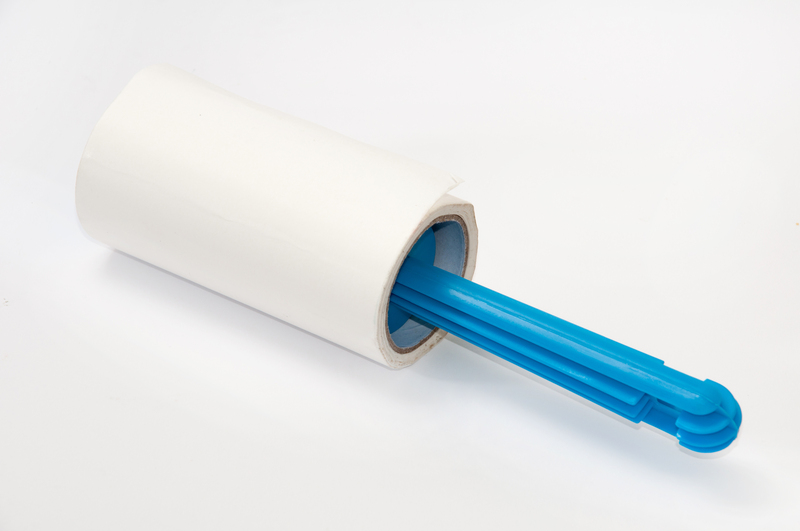Inviting Fresh Air: The Necessity of Top-Tier Indoor Air Quality Practices
Posted on 20/06/2025
Inviting Fresh Air: The Necessity of Top-Tier Indoor Air Quality Practices
Are you aware of the importance of indoor air quality for your health and well-being? In today's modern living and working environments, enclosed spaces are increasingly sealed against the elements. While this boosts energy efficiency, it also means that the air we breathe indoors can quickly become polluted. This comprehensive guide will show you why embracing top-tier indoor air quality practices is not just a luxury--it's a necessity for every home and business.
What Is Indoor Air Quality (IAQ)?
Indoor air quality refers to the condition of the air inside buildings, including homes, offices, schools, and public areas. It's measured by the presence of:
- Pollutants such as volatile organic compounds (VOCs), formaldehyde, and carbon monoxide
- Particulate matter like dust, pollen, and mold spores
- Humidity and temperature levels
- Fresh air exchange rates

Why Is Top-Tier Indoor Air Quality So Vital?
Studies by organizations like the Environmental Protection Agency (EPA) reveal that people spend up to 90% of their time indoors. Poor indoor air quality can lead to a variety of issues, from minor irritations to serious chronic conditions, including:
- Short-term symptoms: headaches, fatigue, dizziness, nasal irritation, throat discomfort, coughing, or dry skin
- Long-term effects: chronic respiratory diseases, asthma, heart disease, and even cancer
Costly Consequences of Ignoring Indoor Air Quality
- Reduced work performance and concentration
- Higher rates of absenteeism due to illness
- Escalating healthcare costs
- Physical damage to furnishings and electronics due to dust and humidity
Therefore, investing in superior indoor air quality practices promotes healthier, more energized lifestyles and workplaces.
Key Pollutants Hindering Fresh Indoor Air
To successfully invite fresh, clean air inside, you must first understand what contaminants you're up against. Here are the most common indoor air pollutants:
- Dust Mites and Allergens: Thrive in carpets, bedding, and upholstery
- Pollen: Enters through open windows and on pets or clothing
- Mold and Mildew: Loves damp corners, leaky plumbing, or HVAC systems
- Pet Dander: Microscopic skin flakes from cats, dogs, and other furry friends
- Volatile Organic Compounds (VOCs): Emitted by cleaning products, paints, adhesives, air fresheners, and tobacco smoke
- Combustion Pollutants: Carbon monoxide and nitrogen dioxide from gas stoves, fireplaces, or furnaces
- Particulate Matter (PM2.5, PM10): Tiny airborne particles from outdoor air, cooking, or unventilated fireplaces
Understanding the Sources
Many contaminants are generated internally, but some also infiltrate from outside. Opening windows for fresh air can help dilute indoor pollutants, but we must also be wary of outdoor pollution on high-smog days. Therefore, adopting a multi-layered approach is key to sustainable indoor air freshness.
The Benefits of Top-Tier Indoor Air Quality Practices
Investing in first-class indoor air quality management isn't just about cleanliness--it's about overall well-being. Here's how:
1. Enhanced Health and Vitality
- Allergy relief and fewer asthma attacks
- Reduced spread of infectious diseases
- Better sleep and increased daytime energy
- Lower stress levels due to a more comfortable environment
2. Improved Productivity and Cognitive Function
- Sharper focus with fewer distractions
- Higher information retention and problem-solving abilities
- Increased attendance and lower sick rates in schools and offices
3. Extended Building and Equipment Lifespan
- Prevents mold and pest infestations
- Protects sensitive electronics from dust and humidity damage
- Keeps furnishings looking new and prolongs their utility
4. Attractiveness and Real Estate Value
- Homes with fresh indoor air quality command higher prices
- Businesses are more inviting, positively impacting customer satisfaction
Best Practices for Achieving Premier Indoor Air Quality
Ready to transform your indoor environment? Here are proven strategies for inviting fresh air and maintaining superior indoor air quality:
1. Increase Ventilation and Fresh Air Exchange
- Open windows and doors regularly--especially during temperate weather
- Install energy recovery ventilators (ERVs) or heat recovery ventilators (HRVs) for continuous fresh air introduction
- Use exhaust fans in kitchens and bathrooms to expel moisture and contaminants
2. Control Humidity
- Maintain indoor humidity between 30-50% using humidifiers or dehumidifiers
- Fix leaks and address condensation issues to prevent mold growth
- Ensure crawl spaces and attics are dry and well-ventilated
3. Manage Sources of Pollution
- Use low-VOC or VOC-free cleaning and construction products
- Prohibit smoking indoors
- Store chemicals and paints in sealed containers, ideally in outdoor sheds
- Regularly maintain gas-burning appliances and ensure functional carbon monoxide detectors
4. Perform Routine Cleaning and Maintenance
- Vacuum carpets and upholstery weekly with a HEPA-filtered vacuum
- Launder bedding and curtains often to reduce dust mites and allergens
- Replace HVAC filters every 1-3 months or as recommended
- Schedule professional duct and vent cleanings every few years
5. Invest in Advanced Air Purification
- Install HEPA air purifiers in bedrooms, offices, and common areas
- Consider UV-C light systems to neutralize microbial contaminants in air ducts
- Add living indoor plants that help absorb some toxins and increase oxygen
Technology's Role in Maintaining Superior Indoor Air Quality
Modern technology makes it easier than ever to monitor and adjust air quality for optimal health.
Smart Air Quality Sensors
These devices track real-time levels of particulate matter, humidity, VOCs, and CO2. Many alert homeowners or facility managers when thresholds are breached, prompting timely action.
Connected HVAC Solutions
- Smart thermostats can regulate temperature and humidity with precision
- HVAC systems can be upgraded with integrated air sanitizers and higher-grade filtration
Portable Air Purifiers
Ideal for allergy sufferers, these units can be moved wherever higher purification is needed--such as bedrooms or home offices--delivering clean, fresh air right where it counts.
Myths and Misconceptions About Indoor Air Quality
Don't let these myths sabotage your pursuit of top indoor air quality:
- "If it smells fine, the air is clean." - Many pollutants are colorless, odorless, and undetectable without specialized sensors.
- "Only people with allergies should worry." - Prolonged exposure affects everyone, not just those with sensitivities.
- "A little dust won't hurt anyone." - Dust often carries toxic chemicals, allergens, and microbial spores.
- "Opening a window solves everything." - While beneficial, it's not always sufficient, especially in polluted cities or during allergy season.
Step-by-Step: Creating a Personalized Indoor Air Quality Plan
Here's a focused approach to inviting fresh air into your living or working space:
- Evaluate Your Space. Use a monitoring device or engage a professional assessment to identify problem areas.
- Eliminate Obvious Pollutant Sources. Remove unnecessary chemicals, service appliances, and fix water leaks.
- Boost Ventilation. Maximize fresh air with open windows, fans, and ventilators.
- Deploy Filtration/Purification. Install HEPA filters and air purifiers appropriate to your square footage.
- Maintain a Cleaning Routine. Adopt regular dusting, vacuuming, and laundering schedules.
- Monitor and Adjust. Keep an eye on air quality metrics and fine-tune your approach as needed.

When to Consult a Professional for Indoor Air Quality
- If unexplained symptoms persist despite your efforts
- Following flooding, fires, or major renovations
- If living or working with vulnerable populations
- When HVAC systems are outdated or showing performance issues
Certified indoor air quality specialists use advanced tools and laboratory tests to pinpoint hidden trouble spots--especially crucial if you suspect mold or chemical contamination.
Building a Healthier Future by Inviting Fresh Air
In summary, embracing top-tier indoor air quality practices is essential for health, happiness, and longevity. The steps may seem simple--ventilation, cleaning, filtration--but when combined and consistently applied, they create a powerful defense against both obvious and invisible environmental threats.
Don't let your indoor space become a source of health problems. Make fresh air a priority in every building you inhabit. With the right systems and habits, you can invite clean, invigorating indoor air into your daily life--and safeguard your future.
Take Action for Exceptional Indoor Air Quality Today
Evaluate your environment, implement the best practices outlined, and invest in proven solutions. Your family's health, your productivity, and your peace of mind all depend on the air you breathe--make sure it's as fresh as possible!



